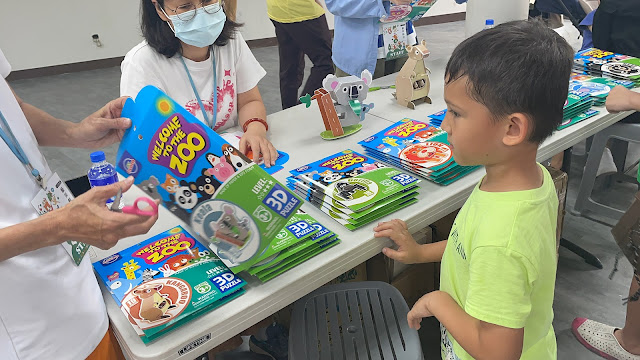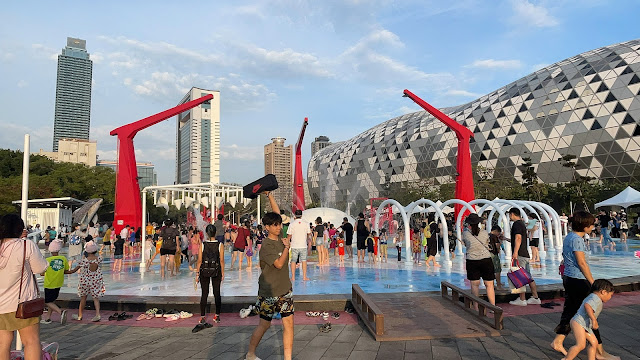Travel Date: 2024/04/06
* It was pretty long post, thus I separated it into 2 parts - check out part 1 - LINK *
Check out also our first day travel, where we visited Tianliao Moon World, Stone Temple and Yangyu Mud Pond and Wushanding Mud Volcanoes
Afterwards, we went to find the ancient walls and gates of Zuoying, which at the time was called Fongshan Town. I like visiting places like this, I always enjoy the architecture. The wall is super big and you can take a walk above. The city walls were built during the Qing Dynasty, in the year 1722.
In the 17th century, Zuoying's strategic location on the Kaohsiung plain made it a crucial juncture, shielded by Turtle Mountain and Snake Mountain. When Taiwan was annexed by the Qing dynasty in 1684, they recognized its defensive potential, establishing Fengshan County seat there. But, rebellions erupted. Chu Yi-kuei's revolt in 1721 exposed Zuoying's vulnerability. Forced to fortify, Liu Kwang-shi built mud walls and moats. Years later, during Lin Shuang-wen's rebellion in 1787, the walls crumbled. Officials deemed the city cursed, relocating the county seat. Yet, invasions persisted. Tsai Chien breached Zuoying's defenses in 1805, prompting consideration to return the city. In 1824, Yang Liang-bin's revolt spurred action. Through public and official contributions, a robust stone wall arose by 1826, a testament to unity. Yet, misfortune seemed to shadow Zuoying. Rumors swirled of the governor's death, casting doubt on the city's fate. Fearful residents shunned the new city. It lay dormant until 1853 when the Qing government mandated its revival. Temples, administrative offices, and defense posts defined Zuoying's landscape. Under Japanese rule, Zuoying's military importance soared. It became a naval port, and the city served as a military district. Post-World War II, Zuoying retained its strategic significance. The gates endured, earning historic acclaim. In 1991, the remaining wall underwent restoration, preserving Zuoying's storied past.
East Gate:
The East Gate, also known as the Fongyi Gate (鳳儀門), is the best-preserved among the four gates of the walled city. A portion of the wall connected to the East Gate still remains. However, during its time as part of the military district, the gate lacked maintenance, allowing vines to grow on it. The gate underwent renovation after the military camp relocated. The North Gate, also called the Gongchen Gate (拱辰門), features two inscribed boards. One on the outside reads "Gongchen Gate," while the one on the inside reads "North Gate" (北門). The gate is adorned with sculptures of door gods named Shenshu (神荼) and Yulü (鬱壘). Nearby, the "Gongchen Well" (拱辰井), constructed approximately 200 years ago near the North Gate, was relied upon by local residents during Qing rule. However, it is no longer functional, and the post-war Republic of China government opted to demolish it. An iron lid now covers the remaining hole, which even bears zebra crossing marks due to the lack of careful preservation. The South Gate, known as the Ciwun Gate (啟文門), sits at the center of a traffic circle after the removal of its connecting walls. Like other gates, the South Gate was constructed with granite. In a 1961 renovation, reinforced concrete was added to the gate's four corners, and the stairways leading to the top were renewed. The West Gate, also referred to as the Dianhai Gate (奠海門), no longer exists, having been destroyed during the Japanese rule period. Evidence of its existence was scarce until a Japanese map of the region was discovered. In 2004, a monument was unveiled by then-mayor of Kaohsiung Frank Hsieh to commemorate the West Gate.
North Gate:
We also went to Lotus Pond, but unfortunately, the Dragon and Tiger Pagoda was under renovation, so we couldn't revisit this place. It was also getting late, and it was closing time for the temple, so that ended our trip. We drove back to the accommodation. That was the last part of our Kaohsiung trip, welcome to also see my previous post if you haven't where I introduce attractions of mountainous areas of Kaohsiung.


%20(2).jpg)








































.png)

























